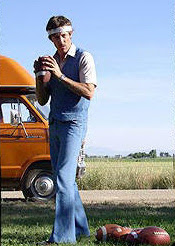Maybe if you get mad enough, you’ll go back inside and call my teacher and say, “I guess she doesn’t want to go to school this year, thank you. Have a nice day. Goodbye.” But you don’t. You hand me my Flintstone vitamin that tastes like purple.
—Shaina, from "Yellow Dresses and Purple Dinosaurs" in One Day at a Time.
Runners Up (5 votes each).
I had been able to seek refuge in the skies while my problems wrapped themselves around my ankles like vines.
—John, from "Bird" in City Something.
The silence was not awkward, although you might’ve expected it to be, we knew what it meant and we held onto its every word.
—Maddie, from "Phone Calls" in Longing.
Honorable Mentions (3 votes each).
Younger siblings are products of the older sibling. They are like smaller replicas of original works of art. They are for the most part the same, but they just lack true originality and uniqueness.
—Tyler, from "#2" in Circle of Consideration.
My neighborhood is not a dangerous place. It is about as dangerous as Switzerland, but without the cool knives and watches.
—Christopher, from "Neighborhood" in People.





